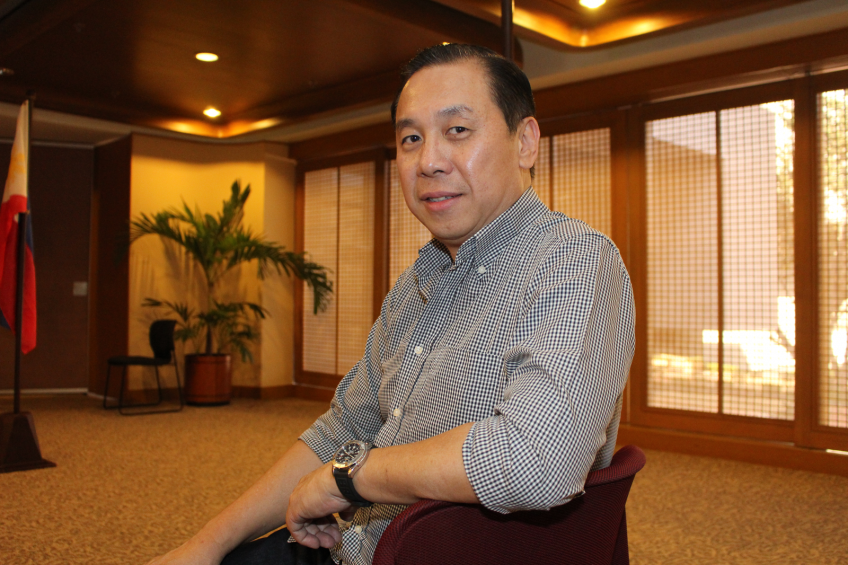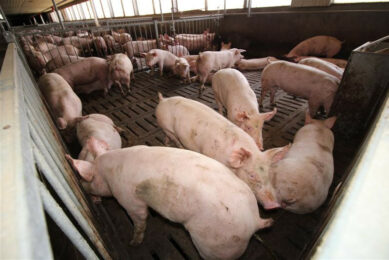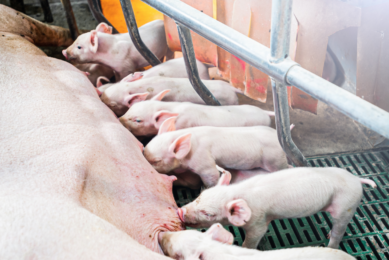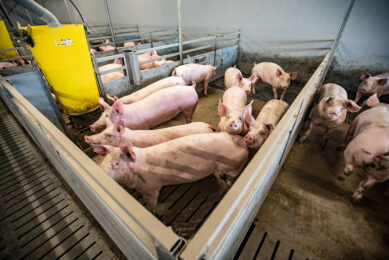Changing the mindset of Philippine pig farmers

With members being large commercial producers as well as being backyard farms, the Philippine pig federation ProPork covers the entire pig industry in the country. President Edwin Chen explains how all of them can improve the way they operate.
Everybody has a rough idea what backyard farming means, but how to define it precisely? Even in the Philippines, a country with still a vast majority of its pig population in backyard farms, the answer depends on who you ask. Commercial parties usually consider anything under 100 pigs as backyard. Edwin Chen, president of ProPork, says, “The government will classify a farm as backyard if it has less than 21 pigs of whatever age. That can be for instance one sow and twenty piglets of whatever age.”
Chen has been president of ProPork, one of the Philippines’ largest pork federations, for many years. In those years he has seen the number of backyard farms go down, similarly to the trend in many other developing Asian markets. Chen says, “Twelve years ago, backyard farms covered 77% of the market. Ten years later it was 70%, so today it is about 65%. As farms modernise and bigger corporate farms come into existence and expand, they are able to handle biosecurity and disease control issues better than the backyard farms. Economies of scale will help as feed has been the biggest cost. You will see the trend of decreasing numbers going at an ever-faster rate. Maybe in ten years we are at 50% – or even lower.”
Pig production connected to backyard farming
So although an ever-larger part of the country is professionalising, still over half the country’s pig production is in one way or another connected with backyard farming. It therefore constitutes a large part of ProPork’s membership, Chen knows. Often, backyard farms are characterised by temporary buildings, without investment or planning. He describes, “It’s a little bit like the tide in our islands, sometimes you see them, sometimes you don’t. Backyard farmers might stop for a while, and when a market opportunity arises, they appear again. They are just low in pig numbers, so it is easy to close and come back again.”
Chen continues, “You will see people living in their house in the countryside, with added to it a small shed. Since the Philippines are a tropical country, the building would be open-sided. Often it has four poles, or it could even be a tent. The owners can put down silt, or they can just raise the pigs on the floor with soil. Sometimes they cement the floor and make some drainage.” The buildings lack stability, with destruction by typhoons being a recurrent problem.
Edwin Chen: “By branding lechon, and by better packaging, we can ship it all over the world. We advise smaller pig farmers to have one centralised selling area. We have to promote the goodness of pork.”
Opportunities to develop the Philippines’ pig industry
For several reasons, however, in the long term it would be better to help develop the smaller farms, he says. For biosecurity reasons, for instance, ProPork and its local member federations encourage the construction of local centres where pig sales can take place. Chen says, “Instead of each farm having their own marketing and selling area, we are advising smaller pig farmers to cooperate and to have one centralised selling area that is far from the sow herds. That way, when buyers come to pick up pigs, they are not near the sow herd, they are only in that area.”
Chen compares it to the situation on his own family pig farm. “Today we have a centralised sow centre with a nursery inside that area. When the weaners reach 25-35 kg, we bring them out to our growing-finishing facilities. These are in different places, with contract farmers bringing them to market weight. Subsequently, we bring the pigs to a centralised marketing area. This way, buyers cannot go anywhere near our sows.”
Competition for the Philippine pig business
Improvement is not only necessary for biosecurity reasons, Chen knows. The imminent future, with the ASEAN Economic Community being a fact as from December 31 of this year, is likely to hold some big challenges for the Philippine pig industry. The agreement implies the disappearance of import taxes in South East Asia. For Filipino pork producers, this is a challenging development, as costs of production are higher on the islands than in most surrounding countries in the South East Asian region. For a large part, this is due to a compulsory 35% tax tariff, imposed by the Philippine government.
For several years now, the internationally successful Thai agribusiness Charoen Pokphand (CP) has already established itself in the Philippines. Chen says, “CP will have a big, big advantage over our producers, because they can source their grains from like Laos and Cambodia with lower grain prices. Or they can produce pork or chickens in areas with the lowest cost of production. And they have access to over 650 million consumers.”
Hopes are low for government support
In order to face the challenge, Chen hopes for government support. He says, “I’m telling our group that we need to organise, we need to push for a national quality seal from the government, so that we can be able to better communicate with our consumers.”
Hopes are low, however, for too much government support. So far, however, government support has mostly been inward-looking, he says. “We have a different mind set from the Thai. They are talking about being Kitchen of the World. Producing for the world! They are thinking in terms of exporting, their government policy is more how to help their local farmers achieve that. But our government in the Philippines has only been talking about one thing: achieving self-sufficiency.”
Taking initiatives and learning from neighbours
For improvement, much initiatives therefore need to be coming from the Philippine pig industry itself. So what to do? Learn from your neighbours is one thing, Chen says, as, apart from being a competitor, Charoen Pokphand is also a member of ProPork. Chen: “CP are doing something good because they are so big. If we can change the mind set of our local pork producers and encourage them to follow what CP are doing, I think it is good for us. I don’t know if it is a politically correct statement but that’s a truth.”
Secondly, being more clever in what you grow might also make a difference. Chen: “If you are backyard farmer, it doesn’t mean that you cannot compete. One of our member associations calls itself ‘Filippine Native Animal Development’. So it’s black piglets, very good for lechon (Philippine dish, traditionally roasted pork, VtB). If you taste it, it is very crispy, very unique, very tasty. And I think by branding it, and by better packaging, we can ship it all over the world, as there are ten million Filipino overseas workers in different parts of the world. In our culture we like celebration, and when we have celebration we like to have lechón. If we can brand it and we can promote it, we can make it big.”
Bringing more awareness
Better marketing is a goal in itself, Chen adds, “We have to talk positively about pork. One of the ways of achieving that is promoting pork in a positive way, like what we are doing now is trying to promote a Philippine Pork Day. Or a national lechon festival or something like that.
We can promote pork as a very good protein source. We have to promote the goodness of pork – not only cholesterol or other bad things. We have to speak about how families are able to send their children to school, to finish college, to finish master degrees, just because they are farming pigs. The story has to bring more awareness.”
Chen knows marketing might backfire – another reason why the country’s farming standards need to go up. “And of course we also have to do our part. Because every time we promote pork we hear a lot of complaints. Are we handling the manure properly? Are we treating the animals humanely? Are we following the government regulations on antibiotics or withdrawal? We need to look first into our own backyard.”
Edwin Chen
Edwin Chen is president of ProPork, an umbrella organisation of 41 association members, scattered all over the islands. Being an architect by training, he got enrolled into agriculture when his family moved into table eggs and later hogs and broilers. Edwin Chen is in charge of the family’s egg and pork business, the latter having the size of 6,000 sows. Filipino know their business through butchery shops called ‘The Meat Market by Holly Farms’ and another meatshop called ‘Karne Korner Ko (KKK)’.
Pig production in the Philippines
The Philippines is divided in a north (Luzon), middle (Visayas) and a south (Mindanao) part. Most pigs are being raised in Luzon, which also includes the capital Manila, as that is the most populated area. Luzon counts for 55-60% of all pigs in the Philippines. Visayas consists of many small islands, its main hub being the city of Cebu. The region is a net importer of pork as its own pork production is not sufficient. Most pigs, often backyard, are held in the western provinces of Iloilo and Negros, and a lot of pork is shipped to the islands in the west. Mindanao, having a Muslim population in the south and south west, is a truly agricultural area, with many fruit trees, pineapple plantations, aquaculture and pig production. The main producing areas for hogs are around General Santos City, Dabaw and the Cagayan de Oro in North Mindanao.











